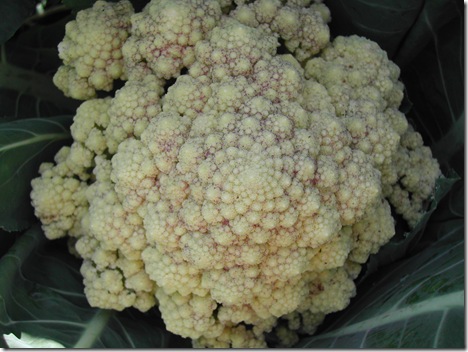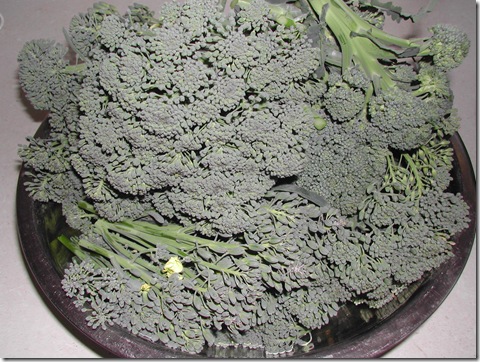Gardeners harvest different parts of plants from different crops to get a feed – roots (carrots, radish), growing tips of ferns (asparagus), immature seeds (peas and beans), leaves (lettuces, cabbages), seeds (sunflowers, corn), seed pods (snow peas), stalks (celery), bulbs (fennel), flowers (nasturtiums and zuccini), fruits (pumpkins) and so on.
With the brassica family, we harvest the immature flower heads, and some of these have great beauty, like the purple-tinged cauliflower below: -
As winter recedes, broccoli plants in the garden are reaching maximum productivity, and are appearing on the table with most main meals. Broccoli provide the classic example of a vegetable where we eat the immature flower heads.
Not only that, with varieties like Green Branching Broccoli, the plant responds to your raids on its main flower head by continuing to produce smaller – but just as tasty – florets for on-going consumption.
I’ve never had ‘broccoli honey’, but judging by the great fondness of bees for brassica flowers – like the broccoli flowers below – there’s many a suburban honey made with more than a touch of broccoli to give it flavour…





